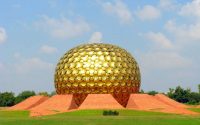October 2, 2017
Delhi Metro City
Welcome To Delhi Metro City
Delhi, the capital of India, is situated in northern India and stands on the west bank of Yamuna River bounded by Uttar Pardesh and on the north, west and south by Haryana . Delhi is spread over an area of 1483 sq. kilometers, 216 meters above sea level and has a population of around 14 million.
Many places in Delhi to visit like….
India Gate , Red Fort , Rashtrapati Bhawane , Iskon Temple , Birla Mandir , Qutub Minar , Old Fort , National Museum , Lotus Temple , Humayun Tomb , Jantar Mantar , Chandni Chowk , Safdarjung’s Tomb , Lodi Garden , Jama Masjid and many more
India Gate:- India Gate is constructed as a memorial and was built in the memory of 90,00 soldiers who laid down their lives during World war I. Located at Rajpath, India Gate Delhi is 42 m high and is a popular relaxation area during the summer evenings. This monument also acts as popular picnic spot during winter. Also known as the All India War Memorial or the Gate of India, India Gate was designed and constructed by Lutyens. He is same architect who designed government buildings in New Delhi.
Lotus Temple:- Strange to see such modern architecture in Delhi of the Lotus Temple. Finished only in 1986 as a Bahà’i house of worship, it is open to all denominations and religions. It has won many awards for its architecture and has drawn up to 150.000 visitirs in a day. Entrance is free to the grounds and buildings where there are extensive gardens and also an information centre.
Qutub Minar:- The Qutb Minar (also spelled as Qutub Minar or Kutb Minar) is world’s tallest rubble masonry minaret and a world heritage site in Delhi. It is situated within the Qutb Complex, which has been the centre of the first city of Delhi since the first Muslim ruler stepped here. Before Muhammad-bin-Sam (Muhammad Ghori) defeated Prithvi Raj Chauhan, this land was with Tomar Rajpoots & Chauhans (Arkpal Tomar gave it to his grandson Prithvi). Chauhan extended the walls of Lal Kot to create Qila Rai Pithora. Ghori left his governor Qutb-ud-din Aibak to rule India after defeating Prithvi Raj Chauhan in 1060 A.D. and thus the slave dynasty started in India.
Jantar Mantar:- Jantar Mantar, the modern name of ‘Yantra Mantra’ which means ‘Instrument with Formula’ is an elaborate and ancient astronomical masterpiece and observatory constructed under the guidance of Maharaja Jai Singh II of Jaipur between 1724 and 1734. It lies in the heart of Delhi and easily accessible from any corner of the Capital City by local transport.
Red Fort:- The Red Fort (Lal Quila) in Delhi, India was originally built by the fifth Emperor of India’s Mughal Dynasty, Shahjahan in 1639, when he moved India’s capital from Agra to Delhi.
The Red Fort, which derives its name from the red sandstone bricks which make up its protective walls, was built as Shahjahan’s new palace and as a defensive structure. The walls of the Red Fort are an imposing sight, rising up to 33 metres in places, with ornate carvings, domes and minarets. In addition to the Red Fort itself, the historic Red Fort Complex is made up of palaces, gardens, halls, monuments, mosques and even another fort, Salimgarh.
The Red Fort, which derives its name from the red sandstone bricks which make up its protective walls, was built as Shahjahan’s new palace and as a defensive structure. The walls of the Red Fort are an imposing sight, rising up to 33 metres in places, with ornate carvings, domes and minarets. In addition to the Red Fort itself, the historic Red Fort Complex is made up of palaces, gardens, halls, monuments, mosques and even another fort, Salimgarh.
Jama Masjid:- The Jama Masjid was designed as the main mosque of Shahjahan. It stands on one of the two hills, Bho Jhala in the Mughal capital, Shahjahanabad. The mosque has three gateways, four towers and two minarets. It is constructed with alternate use of vertical strips of red sandstone and white marble. The white marble has been used extensively in the three domes and has been inlaid with stripes of black. The structure was situated on a high platform so that its magnificent facade would be visible from all the neighboring areas. The main prayer hall on the west is decorated by a series of high cusped arches, which stand on 260 pillars. These pillars support 15 marble domes at various elevations. The imposing gateways are approached through a broad flight of steps in the north and the south. The hallmarks of this famous mosque are the wide staircases and arched gateways.
Metro is the best way to connect all the places where u wanted to visit. I hope you like to read about Delhi and Delhi Places.


